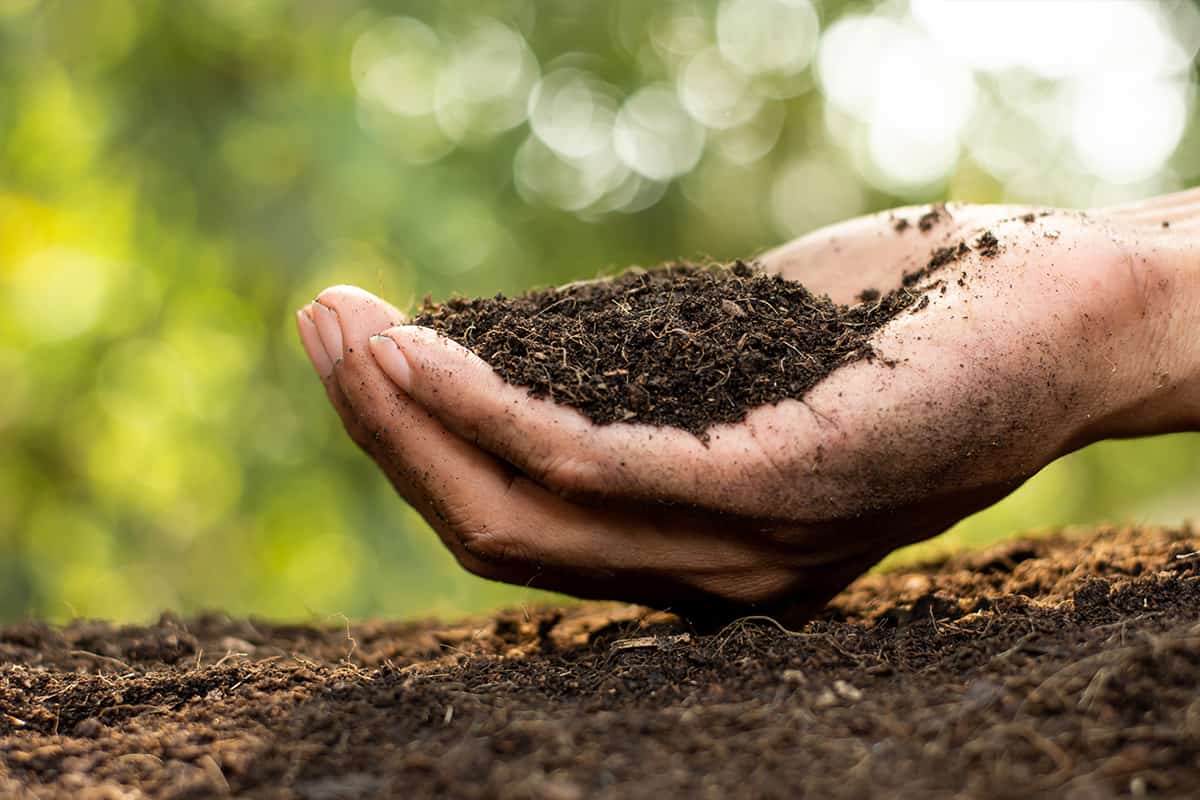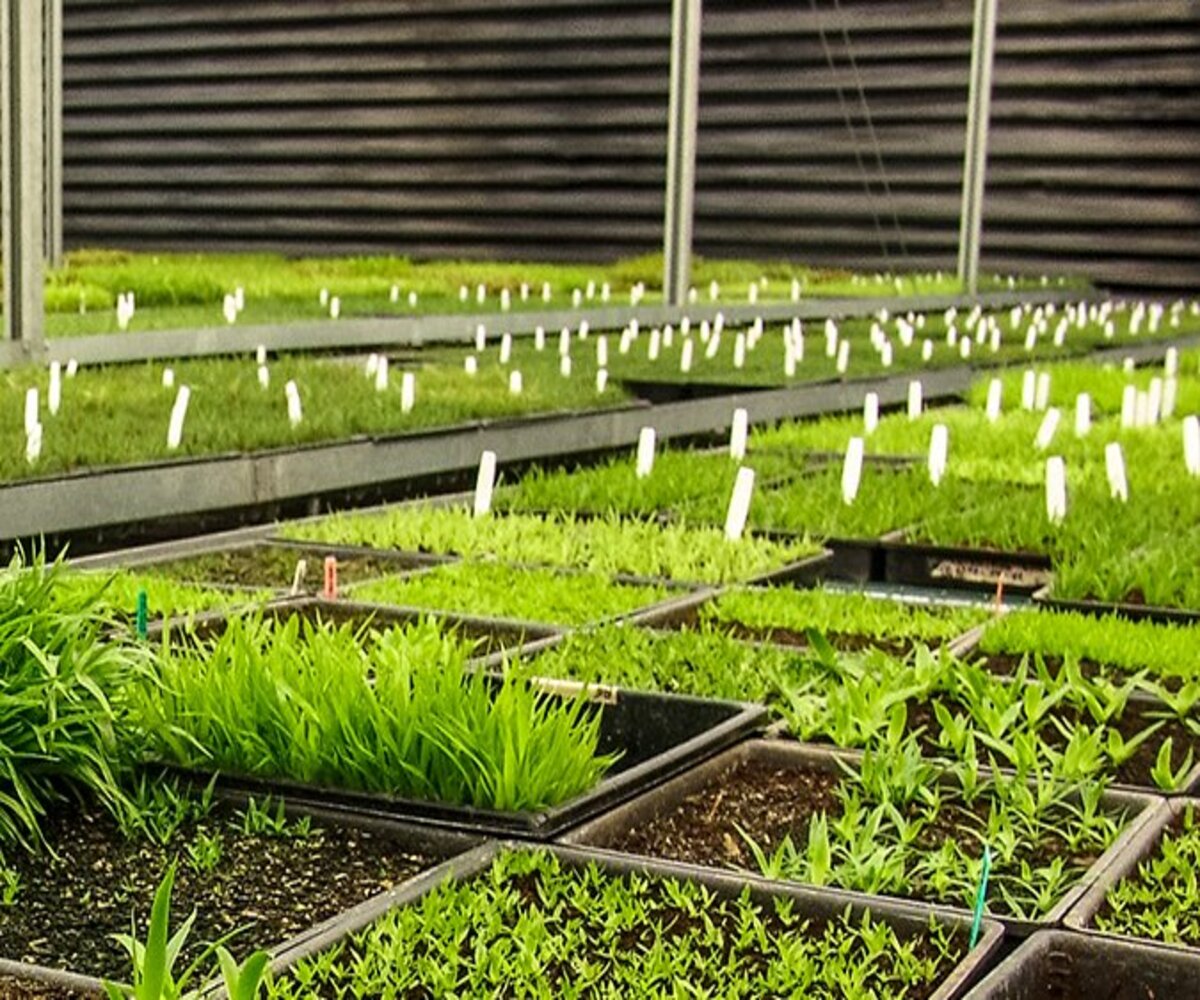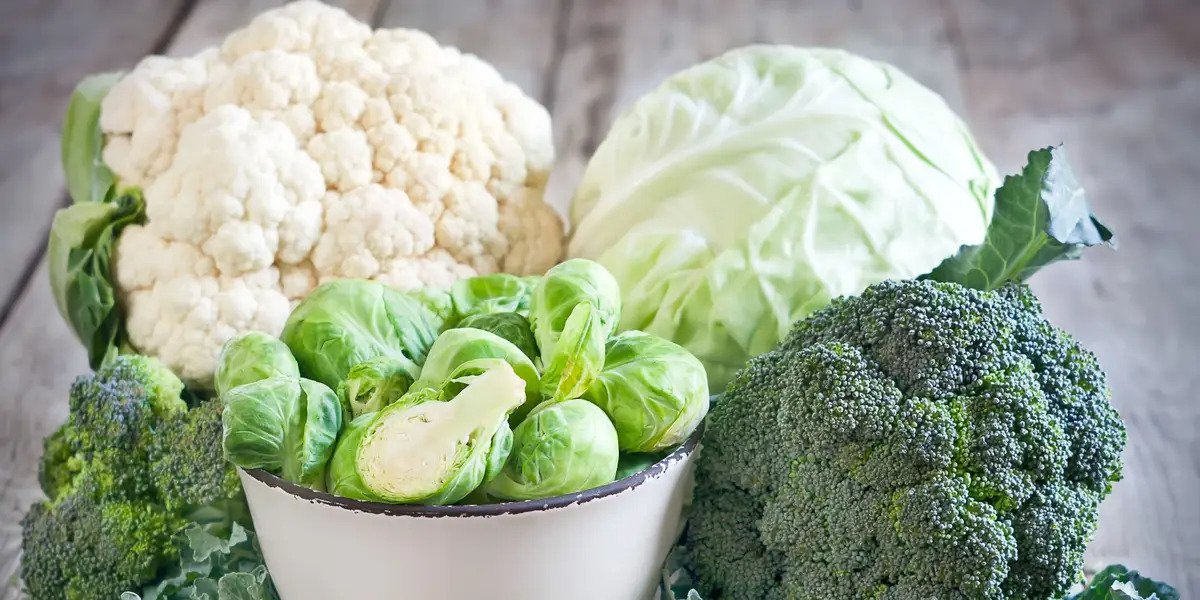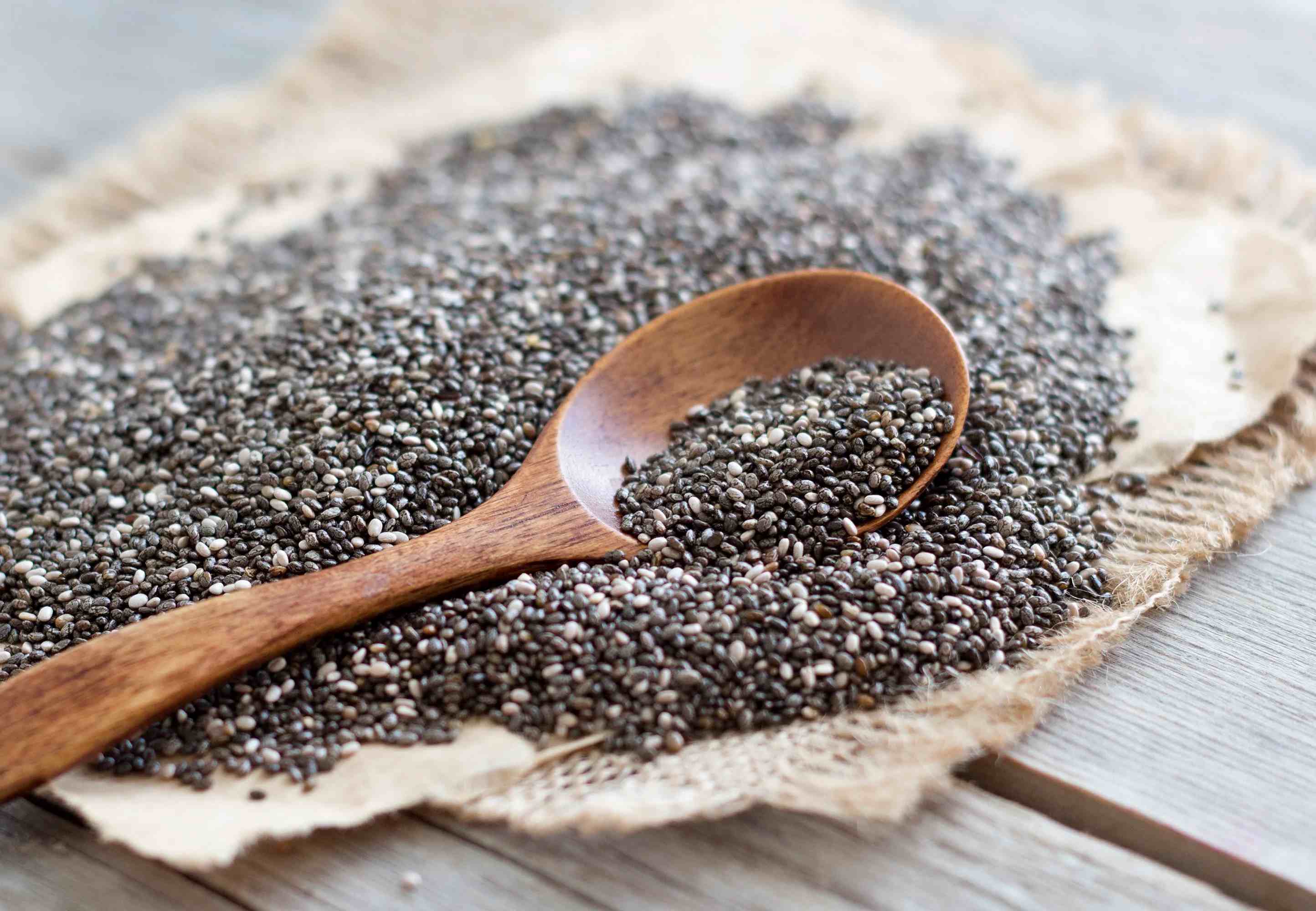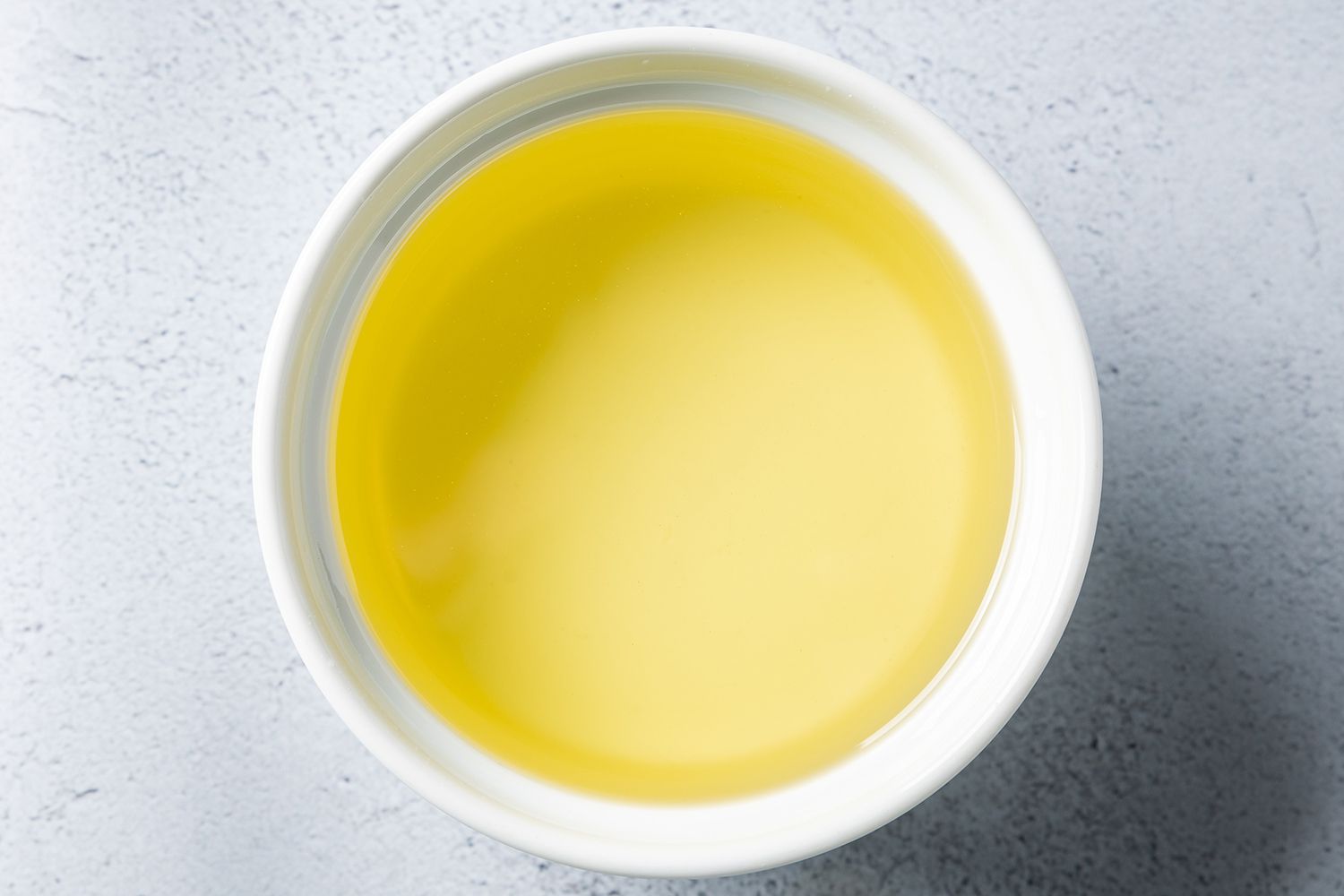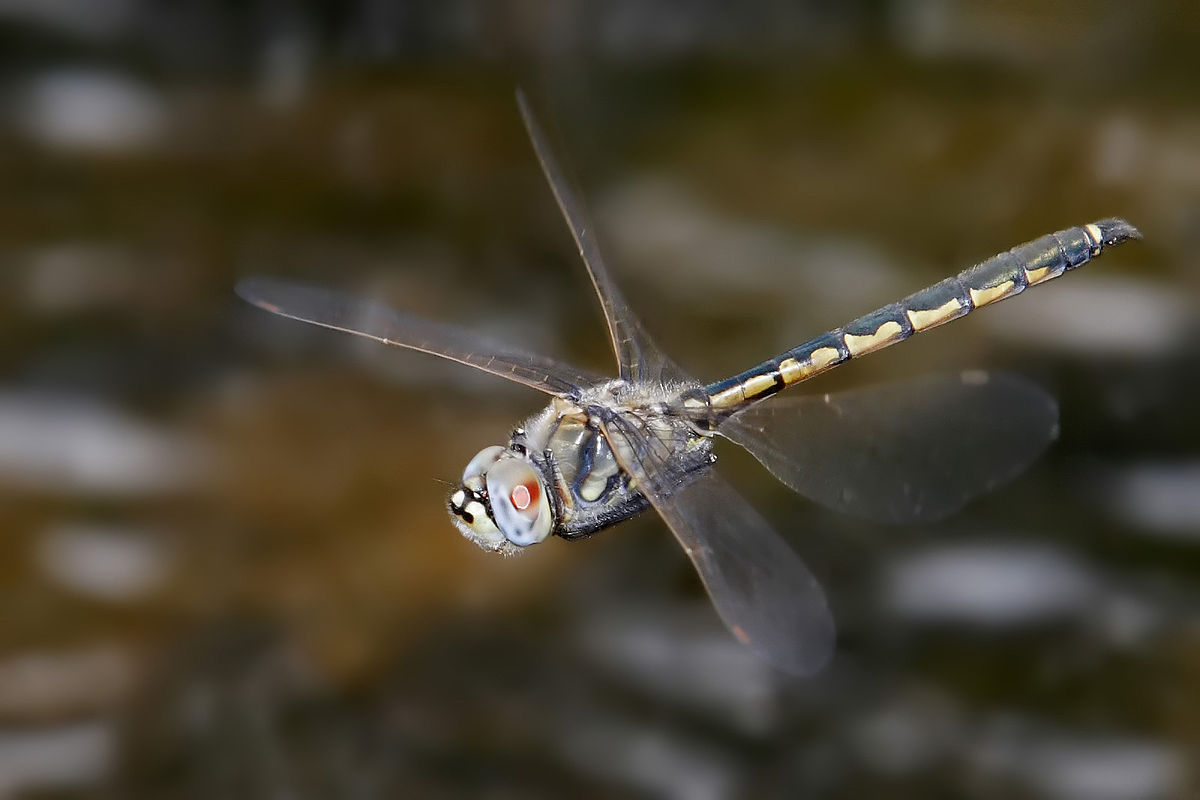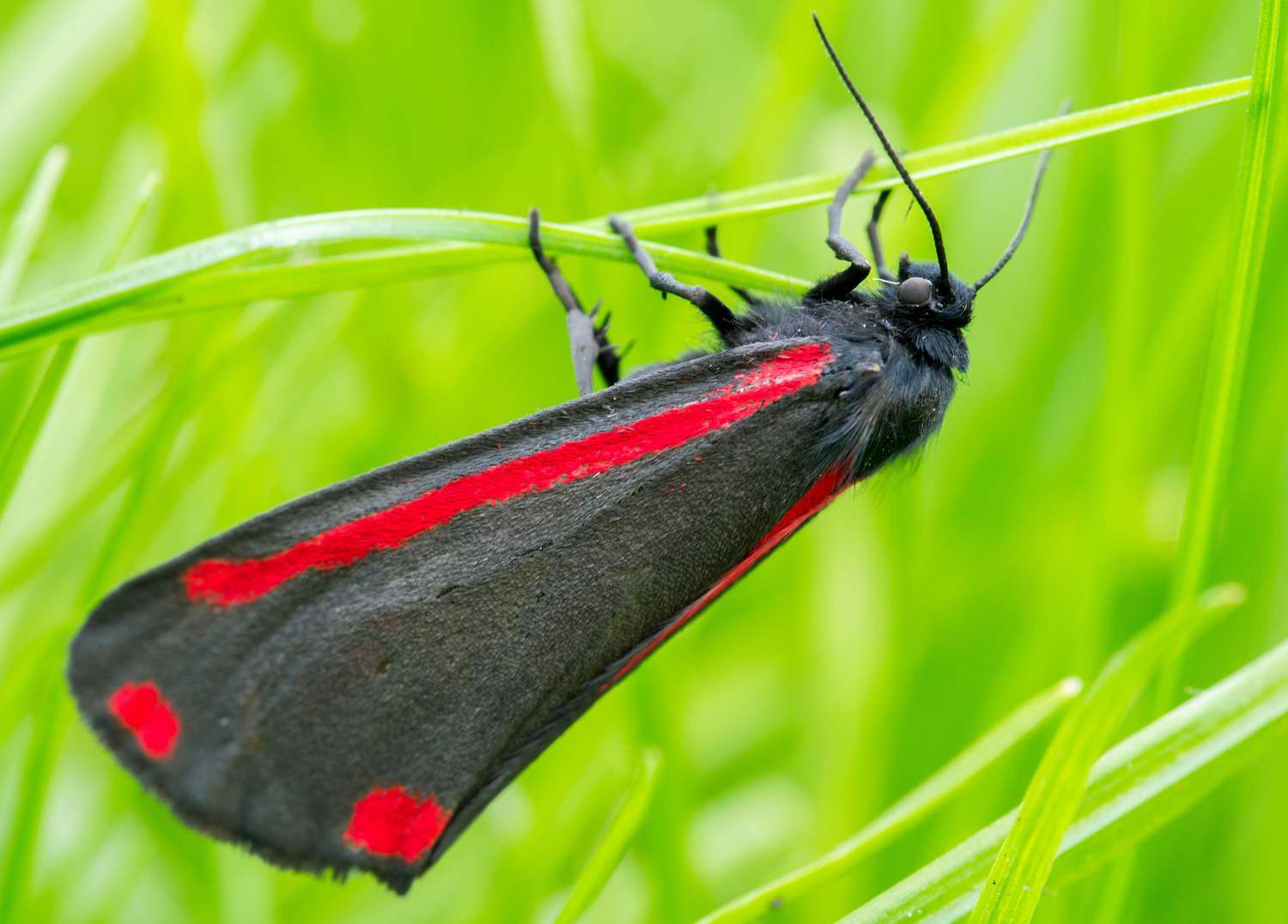Home>Gardening News and Trends>Latest News>What Insects Make Honey
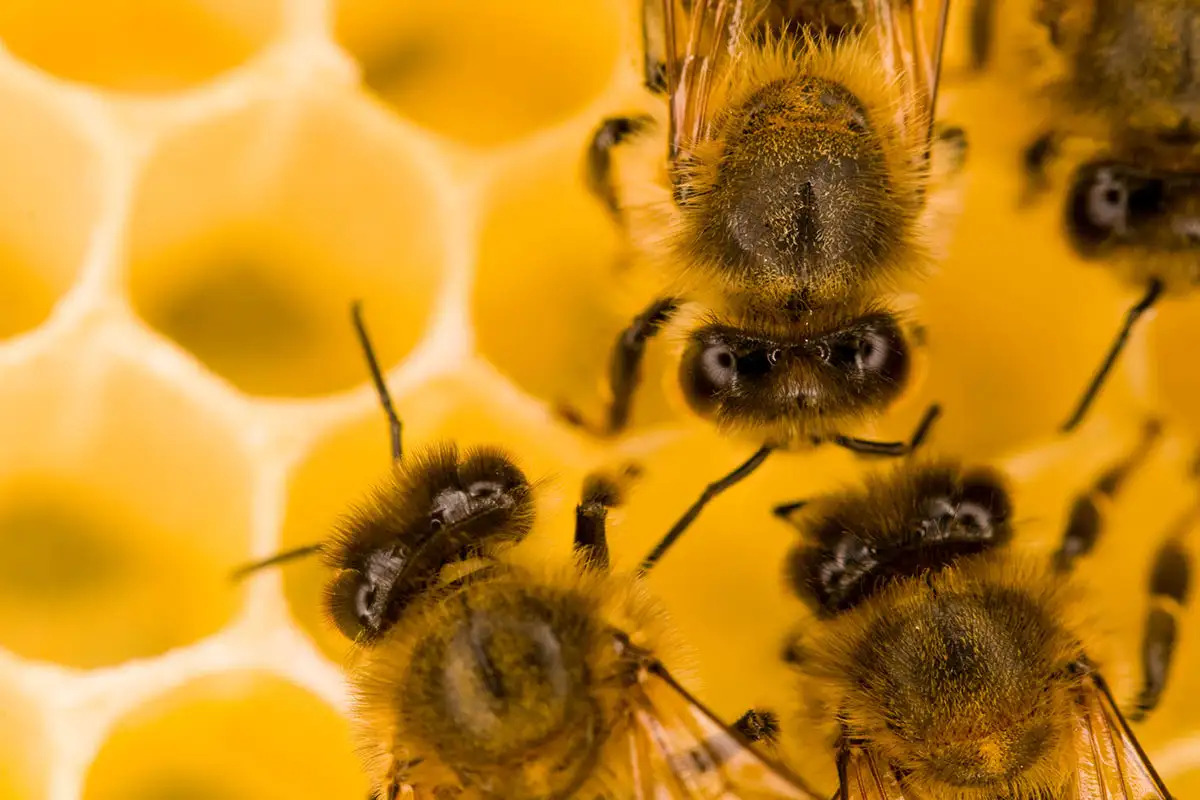

Latest News
What Insects Make Honey
Published: December 7, 2023
Discover the most recent news on what insects make honey and how they contribute to the fascinating world of beekeeping. Stay updated and informed with the latest developments in the honey industry.
(Many of the links in this article redirect to a specific reviewed product. Your purchase of these products through affiliate links helps to generate commission for Chicagolandgardening.com, at no extra cost. Learn more)
Table of Contents
Introduction
Honey is a delicious and nutritious sweetener that has been enjoyed by humans for thousands of years. When we think of honey, the image of bees immediately comes to mind. However, did you know that bees are not the only insects that produce this golden elixir?
In fact, there are several other insect species that play a fascinating role in honey production. From ants to wasps to termites, these insects have their own unique ways of creating their version of honey. In this article, we will explore the surprising world of honey-making insects beyond bees.
The process of honey-making begins with the collection of nectar from flowers. Nectar is a sweet liquid produced by plants to attract pollinators. Bees are the most well-known and efficient pollinators, but they are not the only ones who indulge in this sugary treat.
While bees have evolved specialized body parts, such as long tongues and hairy legs, to efficiently collect and transport nectar, other insects have different strategies. Some insects, like ants and wasps, use their mouthparts to directly suck up nectar from flowers. Others, like termites, have unique symbiotic relationships with bacteria and fungi that help them break down plant material and convert it into honey-like substances.
If you’re ready to delve into the fascinating world of insect honey production, keep reading. You’ll be amazed by the diversity of insects that contribute to the creation of this sweet and sticky delight.
The Honey-Making Process
The honey-making process starts with the collection of nectar from flowers. When insects such as bees, ants, wasps, or termites visit flowers in search of food, they often inadvertently become covered in pollen. This pollen sticks to their bodies as they move from flower to flower. As they go about their business, they are unknowingly pollinating the plants and ensuring their reproductive success.
While collecting pollen is essential for the plants, the insects have another agenda – gathering nectar. Nectar is a sweet, sugary liquid that is produced by the flowers to attract pollinators. It serves as the main source of energy for the insects and plays a crucial role in their survival.
To extract the nectar, bees and other honey-making insects use their specialized mouthparts to suck it out from the flower’s nectar glands. Once inside their mouth, they store the nectar in a special honey sac called the crop or the honey stomach. This sac is separate from their digestive system and allows them to carry large amounts of nectar back to their colony.
Back at the hive or nest, the insects regurgitate the stored nectar into the mouth of another bee, wasp, or ant worker. These workers chew the nectar and mix it with enzymes, such as invertase and amylase, which help break down the complex sugars present in the nectar into more digestible forms. This enzymatic process also adds to the flavor and texture of the resulting honey.
After this initial digestion and mixing, the partially processed nectar is deposited into cells within the hive or nest. The insects then work to reduce the water content of the nectar by fanning their wings to create airflow and evaporate the excess moisture. Once the water content is reduced to about 17-18%, the insects seal the cell with wax or other materials to prevent further water absorption and microbial growth.
Over time, the partially digested and dehydrated nectar undergoes further enzymatic changes, resulting in the transformation of complex sugars into simpler ones. It gradually thickens and develops the distinctive flavor, aroma, and color that we associate with honey.
Once the honey-making process is complete, the insects will use the stored honey as a food source for themselves or their colony. In the case of honeybees, excess honey is often harvested by beekeepers for human consumption.
Now that we have a general understanding of the honey-making process, let’s explore the specific insect species involved in honey production.
Bees as Honey Producers
When it comes to honey production, bees are the undisputed champions. They are well-known for their intricate social structure, efficient foraging techniques, and exceptional honey-making abilities. Bees belong to the family Apidae and are divided into several genera, with the most famous being the genus Apis, which includes honeybees.
Honeybees, specifically the western honeybee species (Apis mellifera), are the most common bees involved in commercial honey production. They build elaborate nests called hives, where thousands of individuals, including worker bees, drones, and a queen, live and work together.
Worker bees, which are all female, are responsible for collecting nectar and producing honey. They have specialized adaptations that allow them to efficiently gather and transport nectar. One of their notable adaptations is the tongue-like proboscis, which can extend deep into flowers to reach the nectar reserves.
When a worker bee finds a good source of nectar, she will repeatedly visit it, taking in as much nectar as her honey stomach can hold. A worker bee can carry up to 70 milligrams of nectar in her honey stomach, which is an impressive feat considering her small size.
Once the bee returns to the hive, she regurgitates the nectar into the mouth of another worker bee. This process is known as trophallaxis and allows for the mixing of the nectar with enzymes that help break down the complex sugars into simpler forms.
The worker bees then spread the nectar in thin layers across the cells of the honeycomb. By fanning their wings, they create airflow, which accelerates the evaporation of water from the nectar. This evaporation process, combined with the enzymatic action of invertase, transforms the nectar into honey.
Bees have an incredible ability to produce honey efficiently. It takes about 12 worker bees collectively traveling a distance equivalent to three times the circumference of the Earth to produce just one teaspoon of honey. This showcases the immense dedication and hard work of these tiny creatures.
Honey not only serves as a food source for bees but also plays a crucial role in their survival. It provides them with the energy they need to fly, maintain their body temperature, and perform essential tasks within the hive. It is also stored as a reserve against times of scarcity, such as winter when flowers are scarce.
Bees are truly remarkable honey producers, and their diligent efforts contribute to the abundance of this sweet golden liquid that we enjoy.
Types of Bees that Produce Honey
While honeybees are the most well-known bees that produce honey, they are not the only ones. There are several other types of bees that play a role in honey production, although they may not be as prolific as honeybees. Let’s explore some of these fascinating honey-making bees.
1. Bumblebees: Bumblebees (genus Bombus) are large, fuzzy bees known for their distinctive buzzing sound and ability to pollinate a wide variety of plants. They do produce honey, but in smaller quantities compared to honeybees. Bumblebees build small nests in the ground or in abandoned rodent burrows, where the queen and her workers store and consume the honey they produce.
2. Stingless Bees: Stingless bees (tribe Meliponini) are small bees found mainly in tropical regions. They are remarkable honey producers, often referred to as “meliponiculture.” These bees build complex nests in tree cavities or other protected areas. While their honey production is relatively lower compared to honeybees, their honey is highly prized for its unique flavor and medicinal properties.
3. Carpenter Bees: Carpenter bees (genus Xylocopa) are large, solitary bees that often nest in dead wood or plant stems. While they are not traditional honey producers like honeybees, they do produce a small amount of honey in their nests. Carpenter bees collect nectar and store it in brood cells, where it undergoes enzymatic changes and transforms into a sticky, edible substance that resembles honey.
4. Mason Bees: Mason bees (genus Osmia) are solitary bees known for their exceptional pollination abilities. They don’t produce honey on the scale of honeybees, but they do store a small amount of nectar in their nests. This nectar acts as a food source for the developing larvae. Mason bees are often used as efficient pollinators in orchards and gardens.
While these bees may have different honey production capacities and techniques compared to honeybees, they still contribute to the overall diversity of honey production in the natural world. Each bee species has its own unique adaptations and ecological role, making honey production a fascinating phenomenon to explore.
Now that we have learned about different types of bees that produce honey, let’s dive into the unconventional insect species that also play a role in honey production.
Honeydew: The Secret Ingredient
When we think of honey, we often associate it with nectar collected from flowers. However, there is another important ingredient in some types of honey – honeydew. Honeydew is a sweet, sticky substance that is secreted by certain insects, and it serves as the main source of food for these insects and the bees that produce honey from it.
Honeydew is produced by sap-sucking insects such as aphids, scale insects, and some species of treehoppers and psyllids. These insects feed on the sap of plants, extracting the nutrients they need and excreting excess sugars and water as honeydew.
While honeydew may not be as well-known or widely consumed as floral nectar, it plays a crucial role in the production of certain types of honey. Insects, especially bees, can collect honeydew from leaves, stems, or the bodies of honeydew-producing insects.
When bees collect honeydew, they follow a similar process to that of collecting nectar from flowers. They use their specialized mouthparts to suck up the honeydew and store it in their crop or honey stomach. Back at the hive, the honeydew is regurgitated and processed by worker bees, just like floral nectar, to create honey.
Honeydew honey has a distinctive flavor and aroma. It is often darker and richer than floral honey, with a complex taste that can range from slightly sweet to earthy, with hints of caramel or molasses.
In some regions, honeydew honey is highly prized and sought after. The aphids and other honeydew-producing insects feed on specific tree species, such as oak, pine, or fir trees. As a result, the honey produced from honeydew can take on the unique flavors and characteristics of the trees from which it was collected.
In addition to bees, other insects also play a role in honeydew collection. Ants are known to “milk” aphids and protect them from predators, in exchange for access to the sugary honeydew they produce. This mutually beneficial relationship allows ants to have a constant food supply and promotes the survival and reproduction of the aphids.
While honeydew honey may not be as widely consumed or recognized as floral honey, it provides a unique and flavorful alternative for honey enthusiasts. The inclusion of honeydew as a source of sweetness in honey expands our understanding of the diverse ways in which insects contribute to honey production.
Now, let’s explore some surprising insects beyond bees that have their own unconventional methods of honey production.
Non-Bee Insect Honey Producers
When we think of honey production, bees are typically the first insects that come to mind. However, there are several non-bee insects that also have fascinating methods of honey production. Let’s explore some of these unconventional honey-makers.
1. Ants: While ants are not typically associated with honey production, some ant species have evolved unique ways to produce and store honey. Certain ant species, such as the honey-pot ants (genus Myrmecocystus), have specialized workers called “repletes” or “honeypots.” These workers gorge on sugary substances, such as nectar or honeydew, until their abdomens swell into a large, liquid-filled pouch. Other ants in the colony then feed off the liquid stored in the honeypots as a reserve food source.
2. Wasps and Hornets: Wasps and hornets are often considered pests and are feared for their stinging ability. However, some species, such as the Asian giant hornet (Vespa mandarinia), produce honey-like substances. These insects collect plant sap and mix it with their saliva to create a sweet, sticky substance that resembles honey. While their honey production is relatively low compared to bees, it demonstrates the versatility of wasps and hornets as resourceful creatures.
3. Termites: Termites are usually associated with wood destruction and as pests. However, certain termite species, particularly those in the family Termitidae, produce a substance known as “termite honey.” Termites have a symbiotic relationship with microorganisms, such as bacteria and fungi, in their digestive systems. These microorganisms help break down cellulose and other complex plant materials into simpler forms, including sugars. The termites consume and store this sugary substance as a reserve, which can be harvested as termite honey.
While these non-bee insects exhibit intriguing honey-making abilities, it is important to note that their honey production is typically on a much smaller scale compared to bees. Bees have evolved specialized adaptations and complex social structures that enable them to produce honey in large quantities efficiently.
Nevertheless, the diverse methods of honey production seen in these non-bee insects highlight the ingenuity and adaptability of insects in utilizing available resources for survival. It is a testament to the rich and complex relationships between insects, plants, and the sweet rewards they provide.
Now that we’ve explored the honey-making abilities of non-bee insects, let’s summarize what we’ve learned.
Ants as Honey Producers
When we think of ants, honey production is not typically the first thing that comes to mind. However, there are certain ant species that have developed unique methods of honey production, showcasing their remarkable adaptability and resourcefulness. Let’s delve into the intriguing world of ants as honey producers.
One notable group of ants that engage in honey production is the honey-pot ants, belonging to the genus Myrmecocystus. These ants have specialized workers known as “repletes” or “honeypots.” These workers have a unique ability to store large quantities of liquid in their distended abdomens.
The honeypot workers fulfill a vital role within the ant colony. They gorge themselves on sugary substances, such as nectar or honeydew collected from plants or aphids, until their abdomens become engorged with a liquid that resembles honey. The swollen abdomen of a honeypot worker can reach impressive sizes, several times larger than a typical worker ant.
Once the honeypot workers are filled with liquid, they hang from the ceilings of chambers in the nest. Other ants within the colony then feed off the stored liquid. The honeypot workers act as living honey jars, keeping the reserve of honey safe and readily available for other ants, especially during times of scarcity.
The process of feeding from the honeypot workers is fascinating. The other ants gently stroke the antennae or mouthparts of the honeypot worker to induce them to regurgitate a droplet of honey. This droplet is then shared among the ant colony members, providing them with a rich source of energy and nourishment.
Honey-pot ants have evolved specialized anatomical features to aid in their honey production. Their abdominal cuticle is stretchable and flexible, allowing them to expand as they store the liquid. Additionally, the honey stored in the honeypot workers goes through a fermentative process, resulting in higher sugar concentrations, which helps prevent bacterial growth.
It is fascinating to witness the division of labor and the cooperative nature of ants within the honey-pot ant colonies. The honey produced by these ants serves as a vital food source, ensuring the survival and well-being of the entire colony, including the larvae and the queen.
While honey-pot ants are the most well-known honey-producing ants, it is important to note that honey production in other ant species may differ in terms of technique and scale. Ants demonstrate remarkable adaptability and innovative ways to utilize available resources, further emphasizing their ecological significance and complexity as social insects.
The honey-making abilities of ants showcase the diversity of insects and their unique adaptations, allowing us to appreciate the incredible world of tiny creatures that contribute to the production of honey.
Wasps and Hornets: Unconventional Honey Makers
When we think of wasps and hornets, honey production may not be the first thing that comes to mind. These insects are often associated with their stinging reputation and predatory nature. However, there are certain species of wasps and hornets that engage in unconventional honey production, showcasing their unique abilities and adaptations.
One example of a wasp species that produces honey-like substances is the Asian giant hornet (Vespa mandarinia). These impressive insects are native to East Asia and are known for their large size and formidable stingers.
Asian giant hornets collect tree sap and mix it with their saliva to create a sweet, sticky substance that resembles honey. They use their mandibles to scrape the bark of trees and other plant sources where sap is present, and then ingest the sap and process it within their bodies.
This sap-mixing behavior is primarily observed in the late summer and early autumn when the wasps require additional energy to fuel their intense activities, such as building and maintaining their nests.
While the honey production of Asian giant hornets may not be on the same scale as honeybees, it demonstrates their resourcefulness in utilizing available food sources. The honey-like substance serves as a valuable source of energy for the hornets and supports their survival and reproductive efforts.
Other species of wasps and hornets may also engage in similar sap or nectar collection behaviors, although the extent of honey production may vary.
It is important to note that the honey-like substance produced by wasps and hornets may differ in composition and flavor compared to honey from bees. The specific plant sources and processing methods used by these insects contribute to the unique characteristics and taste profiles of their honey-like substances.
These unconventional honey makers highlight the ecological significance and versatility of wasps and hornets. They play an important role in pollination and prey on other insects, helping to regulate populations and maintain a balance in ecosystems.
Yet, beyond their predatory nature, wasps and hornets also demonstrate their adaptability in gathering and transforming plant resources into sweet substances that serve their nutritional needs.
The diverse strategies of honey production observed in wasps and hornets remind us of the intricacies of the natural world and the multitude of ways in which insects contribute to the creation of valuable and delectable products like honey.
Termites: Surprising Honey Producers
When it comes to honey production, termites may not be the first insects that come to mind. Termites are often associated with their destructive habits and the damage they can cause to wooden structures. However, certain termite species have evolved fascinating methods of honey production, showcasing their unique adaptations and abilities.
Termites belong to the order Isoptera and are known for their social behavior and complex colonies. While it is true that the primary diet of termites consists of cellulose-rich materials like wood, some termite species within the family Termitidae have developed symbiotic relationships with microorganisms that enable them to produce honey-like substances.
Termites have specialized compartments in their digestive systems, known as hindguts, where symbiotic bacteria and protozoa reside. These microorganisms help break down the complex cellulose found in plant material into simpler forms, including sugars.
As termites consume plant material, the symbiotic bacteria and protozoa in their hindguts produce enzymes that break down the cellulose. This process results in the formation of sugars, which the termites are then able to absorb and utilize as a source of energy.
Interestingly, the sugars produced and absorbed by termites undergo a process of fermentation within their hindguts. This fermentation process further transforms the sugars, resulting in the production of a sweet, honey-like substance.
Termites store this honey-like substance within their nests as a reserve food source. Worker termites can collect and consume the stored honey, providing them with the energy they need for their daily activities and maintaining the overall functioning of the termite colony.
While the honey production in termites may not reach the same scale as honeybees or some ants, it is a remarkable adaptation that allows termites to thrive in their ecological niche.
It is worth noting that termite honey differs in composition and flavor from honey produced by bees. The unique plant sources and the fermentation process within the termite digestive system contribute to the distinctive characteristics of termite honey.
Termites play significant ecological roles as decomposers and nutrient recyclers in ecosystems. Their ability to produce honey-like substances adds another dimension to their importance in the natural world.
The unexpected honey production in termites reminds us of the remarkable adaptations and ecological diversity present among insects. From their ability to break down cellulose to the formation of honey-like substances, termites demonstrate their resourcefulness and capability to utilize available resources for their survival and prosperity.
Conclusion
The world of honey production extends beyond the familiar bees that we traditionally associate with this sweet and golden substance. Through exploring the honey-making abilities of various insect species, we have gained a deeper appreciation for the diversity and ingenuity found in the natural world.
Bees are exceptional honey producers, with their intricate social structures and specialized adaptations for collecting and processing nectar. They have perfected the art of honey production, providing us with the delicious treat that we enjoy.
However, other insect species have also carved out their own unique methods of honey production. Ants, such as honey-pot ants, have developed specialized workers that store and regurgitate liquid reserves, creating an alternative form of honey for their colonies.
Wasps and hornets, typically known for their predatory behavior, surprise us with their ability to produce honey-like substances. These insects collect and process plant sap, transforming it into a sweet and sticky substance that serves as a valuable energy source.
Even termites, often associated with their destructive tendencies, have symbiotic relationships with microorganisms that enable them to produce honey-like substances from plant material.
Exploring these unconventional honey producers expands our understanding of the intricate relationships between insects and the natural resources they utilize for survival. It showcases their resourcefulness, adaptability, and ecological significance within their respective ecosystems.
Whether it is the honey produced by bees, ants, wasps, hornets, or termites, each variant possesses unique characteristics, flavors, and nutritional benefits. The diverse methods of honey production exemplify the wealth of the natural world and the complexity of insect behavior.
As we indulge in the sweetness of honey, let us remember the fascinating contributions of these insect species. They not only provide us with a delectable treat but also exemplify the wonders of nature’s ingenuity and the interconnectedness of organisms within ecosystems.
So, the next time you savor a spoonful of honey, take a moment to appreciate the intricate and diverse world of insect honey producers that have contributed to its creation.
